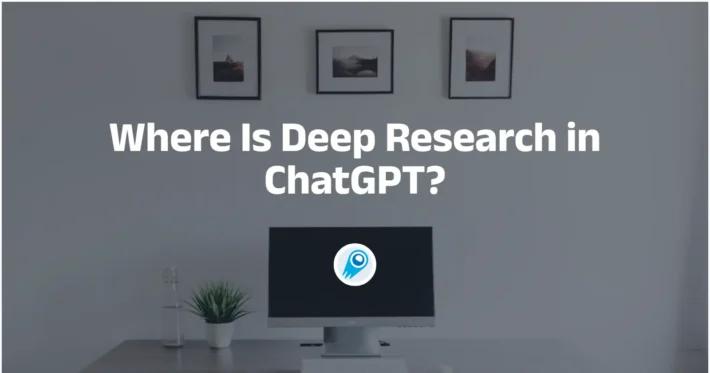OpenAI’s GPT-Image-1 API is a state-of-the-art, multimodal image generation model that enables developers and businesses to integrate advanced image creation capabilities into their applications. This API allows for the generation of high-quality images from textual prompts, supporting diverse styles and precise content rendering.
Key Features of GPT-Image-1
GPT-Image-1 is designed to generate high-quality images from textual prompts, offering users the ability to create visuals in diverse styles and formats. Key features include:
- Multimodal Integration: GPT-Image-1 is designed to process and generate both textual and visual data seamlessly. This multimodal integration allows for more dynamic interactions, enabling users to input prompts that combine text and images to produce coherent and contextually relevant outputs.
- Custom Prompt Adherence: Accurately interprets and visualizes user-defined prompts, ensuring alignment with specified requirements.
- World Knowledge Incorporation: Utilizes extensive training data to embed contextual understanding and real-world knowledge into generated images.
- Text Rendering Capability: Effectively integrates textual elements within images, maintaining legibility and stylistic consistency.
- Enhanced Visual Reasoning: Building upon the capabilities of its predecessors, GPT-Image-1 exhibits improved visual reasoning. It can interpret complex scenes, understand spatial relationships, and generate images that align closely with the provided textual descriptions.
- High-Fidelity Image Generation: The model is capable of producing high-resolution images with remarkable detail and accuracy. This feature is particularly beneficial for applications requiring photorealistic outputs or intricate design elements.
These features collectively empower users to generate images that are not only visually appealing but also contextually meaningful, catering to a broad spectrum of creative and professional needs.
Technical Architecture
Foundation on GPT-4o
GPT-Image-1 is built upon the GPT-4o framework, which is known for its robust performance in both language and vision tasks. This foundation provides GPT-Image-1 with a solid base for handling complex multimodal inputs and generating high-quality outputs.
Autoregressive Image Generation
Unlike diffusion-based models, GPT-Image-1 employs an autoregressive approach to image generation. This method allows the model to generate images sequentially, ensuring consistency and coherence in the visual outputs.
Tokenization and Data Processing
The model utilizes advanced tokenization techniques to process and understand input data effectively. This includes the ability to interpret and generate text within images, enhancing its utility in applications like document analysis and content creation.
Technical Specifications
Input and Output
- Input: Text prompts and optional image inputs.
- Output: Generated images based on the provided prompts.
Resolution Support
GPT-Image-1 supports high-resolution image generation, including dimensions such as 1024×1024, 1024×1536, and 1536×1024 pixels.
Safety and Moderation
The API incorporates robust safety measures, including:
- Content Filtering: Developers can set the
moderationparameter toauto(default) for standard filtering orlowfor less restrictive filtering. - C2PA Metadata: All generated images include C2PA metadata, enabling platforms to identify AI-generated content.
Performance evaluation and benchmarking
Image quality evaluation
In image quality evaluation, GPT-Image-1 has an average score of 9.1 points (out of 10 points), which is significantly better than other mainstream models. It performs well in terms of image clarity, color reproduction, and detail performance.
Generation speed and efficiency
When generating 256×256 resolution images, the average generation time of GPT-Image-1 is 6.1 seconds, which is better than similar models. In addition, its generation efficiency at higher resolutions is also excellent, meeting the needs of real-time generation.
Performance Metrics
GPT-Image-1 has achieved impressive accuracy rates in generating images across different classes and conditions. For example, it has demonstrated a 93% accuracy rate in generating images of cats, 91% for landscapes, and 94% for nighttime scenes. Additionally, the model has shown superior performance in style transfer tasks, outperforming other models like GAN and PixelCNN.
How to call GPT-Image-1 API from CometAPI
GPT-Image-1 API Pricing in CometAPI,20% off the official price:
- Input Tokens: $8 / M tokens
- Output Tokens: $32/ M tokens
Required Steps
- Log in to cometapi.com. If you are not our user yet, please register first
- Get the access credential API key of the interface. Click “Add Token” at the API token in the personal center, get the token key: sk-xxxxx and submit.
- Get the url of this site: https://api.cometapi.com/
Useage Methods
- Select the “
GPT-Image-1” endpoint to send the API request and set the request body. The request method and request body are obtained from our website API doc. Our website also provides Apifox test for your convenience. - Replace <YOUR_API_KEY> with your actual CometAPI key from your account.
- Insert your question or request into the content field—this is what the model will respond to.
- . Process the API response to get the generated answer.
For Model lunched information in Comet API please see API guide (model name: gpt-image-1)
For Model Price information in Comet API please see https://api.cometapi.com/pricing.
API Usage
OpenAI provides access to GPT-Image-1 through its Images API, enabling developers to integrate image generation capabilities into their applications.
1.Generate Image: This model follows the openai v1/images/generations format for calls,
see details at: https://apidoc.cometapi.com/images-api-13851474.
url: https://api.cometapi.com/v1/images/generations
An example of using the API is as follows:
import requests
url = "https://api.cometapi.com/v1/images/generations"
headers = {
"Authorization": "Bearer YOUR_API_KEY",
"Content-Type": "application/json"
}
payload = {
"model": "gpt-image-1",
"prompt": "A billboard in a city square that reads 'Welcome to the Future'",
"n": 1,
"size": "1024x1024"
}
response = requests.post(url, headers=headers, json=payload)
image_url = response.json()
print("Generated Image with Text URL:", image_url)
This script creates an image featuring the specified text within the scene.
2.Edit Image: This model follows the openai v1/images/edits format for calls,
see details at: [Image Editing (gpt-image-1)](https://apidoc.cometapi.com/images-api-13851474).
url: https://api.cometapi.com/v1/images/edits
If you have any questions about the call or have any suggestions for us, please contact us through social media and email address support@cometapi.com.
See Also How much does GPT-Image-1 cost?
